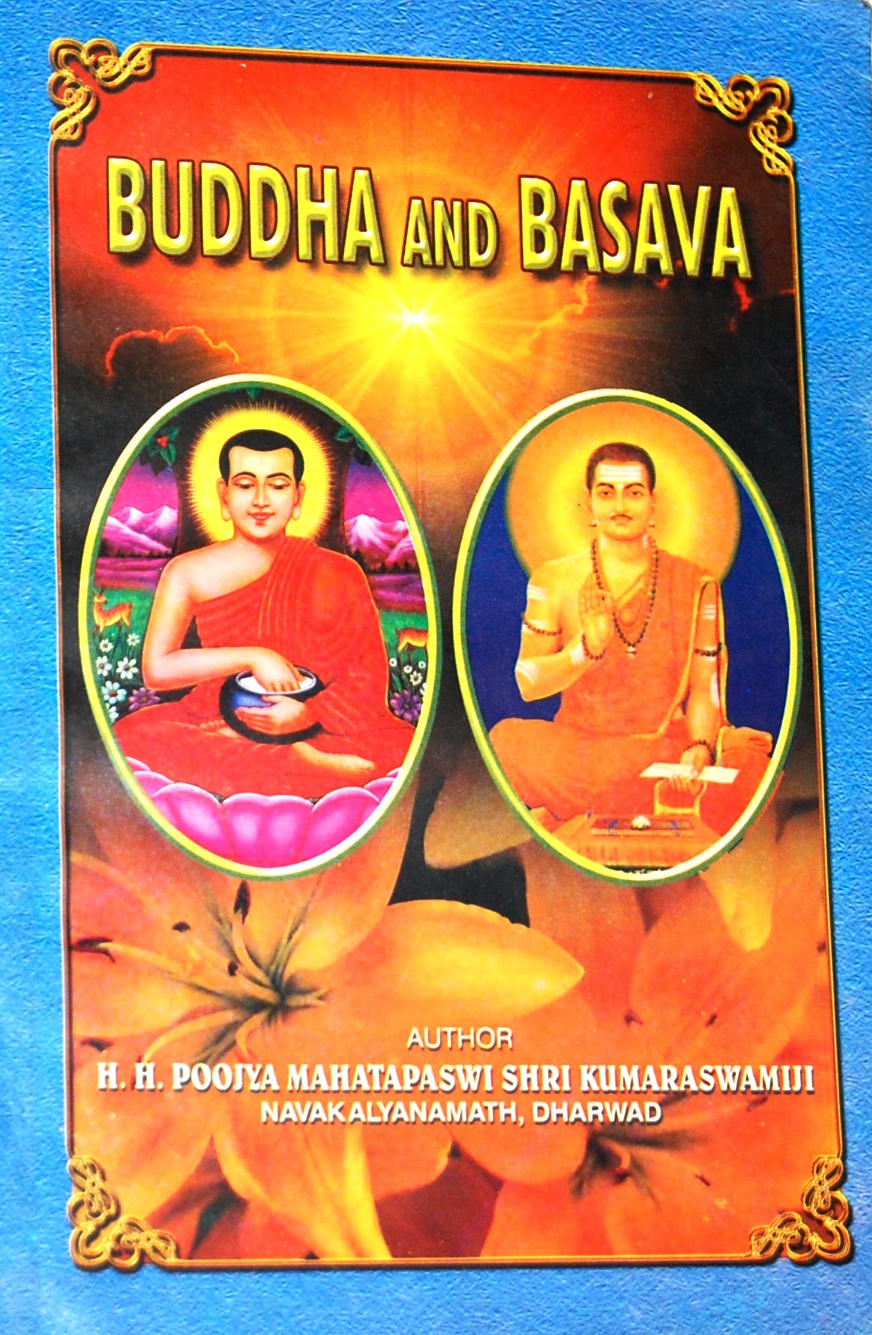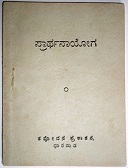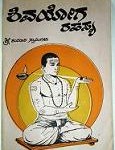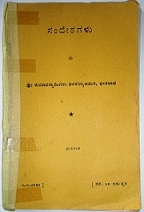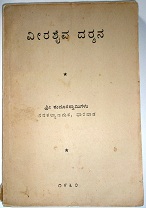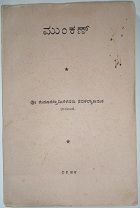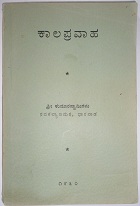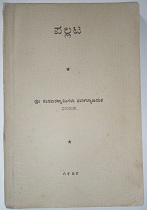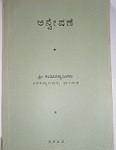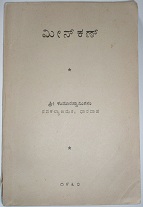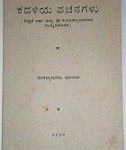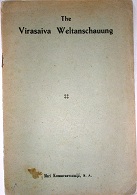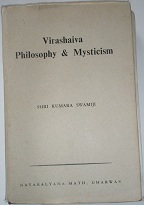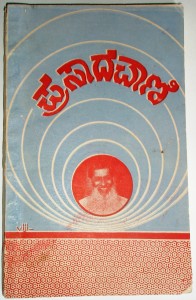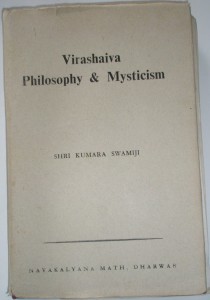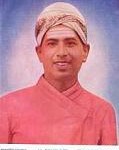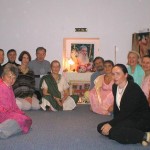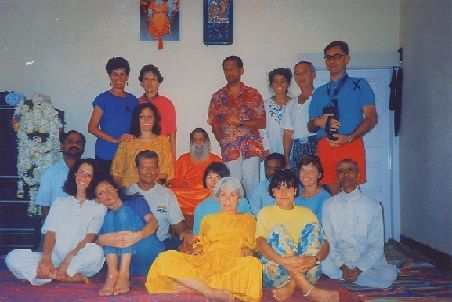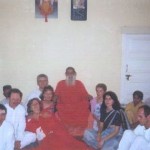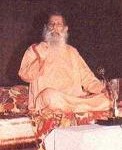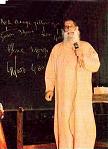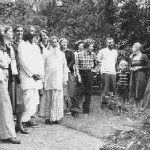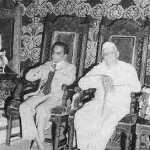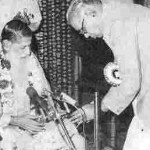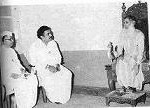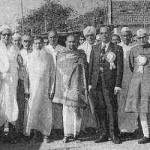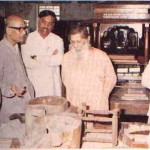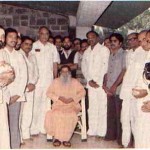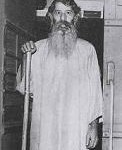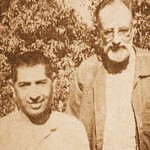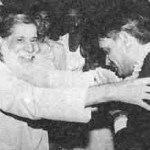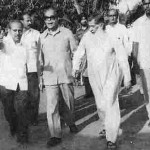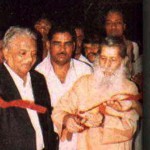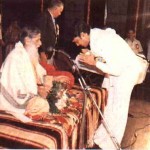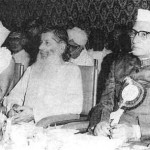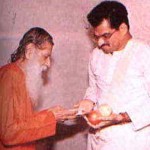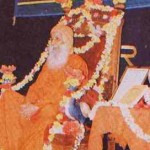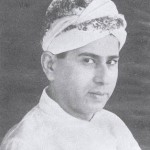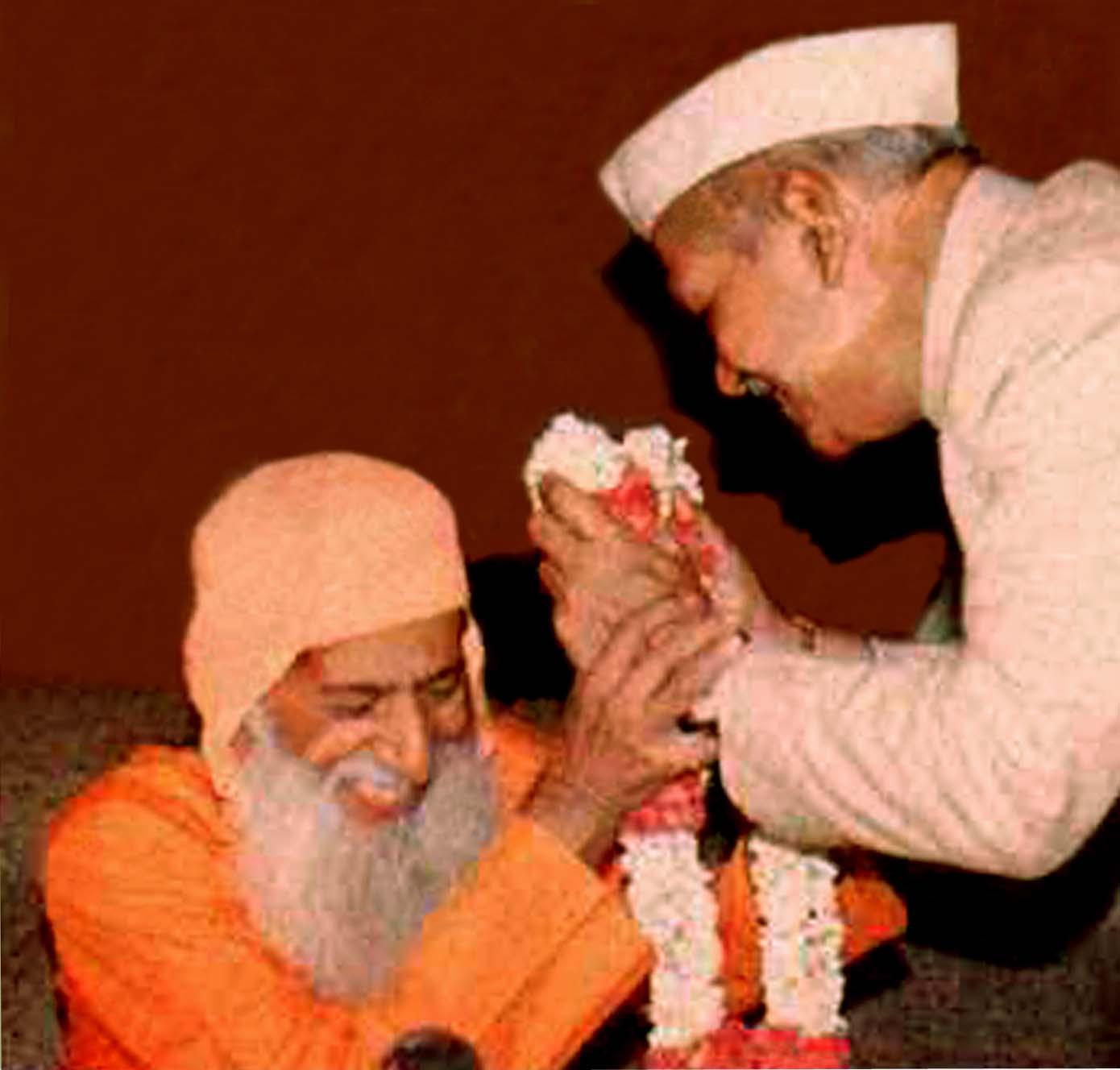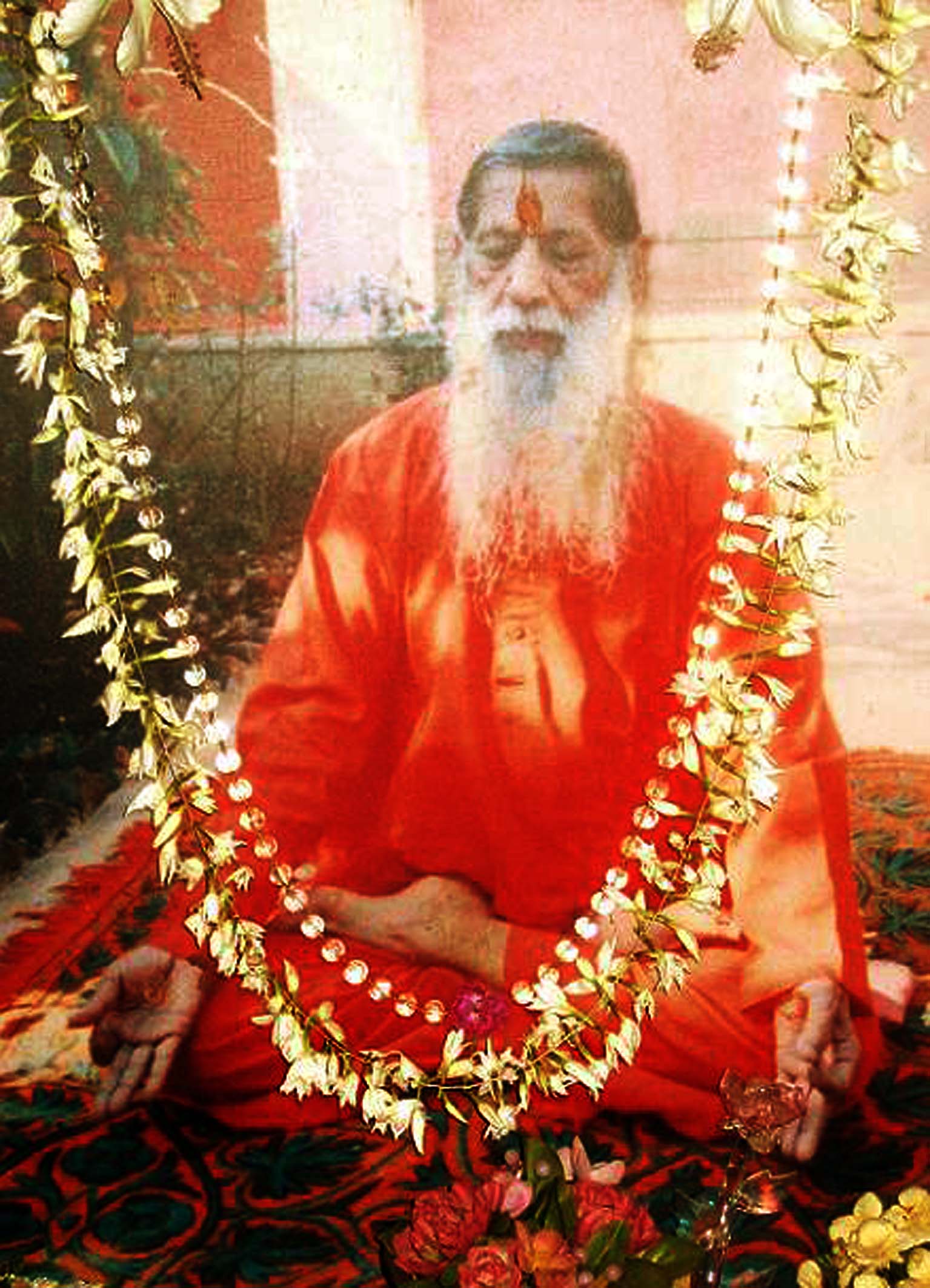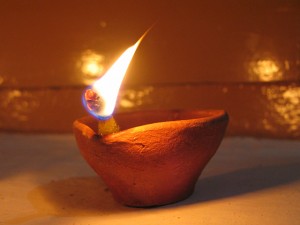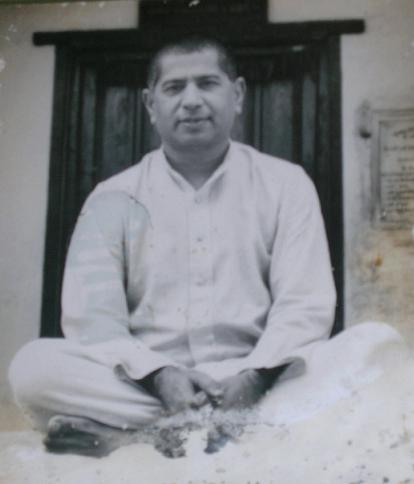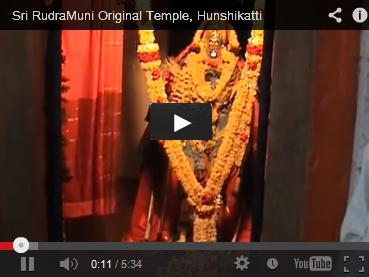Allama Prabhu who gives a graphic account of Shunya or the Absolute in positive as well as negative terms. What is Shunya? It is a Bindu, it is a point without one or rather it is a centre which cannot be represented even by the number One. It is neither one nor many; it is altogether beyond the reach of human intellect and the best way of designating is to name it a Bindu, the centre. Shunya also means cipher; the Absolute is represented by zero because all attempts of the human mind to define it end in a zero. It is the absence of all predicates, for anything said about it is insufficient or too much.
“ondu illada binduva,
tande illada kandana,
mate illada jatana,
gamanavillada gamyana,
muvarariyada mugdhana
thava torisa Guheswaralingadalli
Sanganabasavanna”.
“Show me Oh! Sanganabasavanna,
The abode of the “Absolute” in Guheswaralinga
The Absolute which is a point without one,
A child without parents,
The knowable without the norms,
The silence beyond the ken of the Three”.
The Shunyasampadane is a name to conjure with. Allama Prabhu addresses the Absolute as Shunya and he describes it as a Point without even the number one (Ondu illada binduva). The numerical, of course, represents the material emanations while the spiritual essence is represented by the Point. We are so habituated to take visible realities around us as a matter of course, and so accustomed to every variety of material form. Imagine then a world or universe consisting entirely and absolutely of a single point, a world which possesses neither length, breadth, depth nor height. Imagine the soul being in such a world and observe what his experience would be like. His experience would amount to this: “He himself his own world, of any other than himself he forms no concept. He knows not length, breadth and height, for he is himself one and all being really nothing. He fills all space and what he fills he is, what he thinks that he utters, and what he utters that he hears, and he himself is the thinker, the speaker and the listener. He is the one and yet the all in all.” This is the description of the Absolute as adumbrated by Prabhu in mathematical terms. Rational mysticism has clearly recognized that there is a point wherein the mystery of creation and contradictions meet; where movement is not all movement and stillness is not stillness; where the idea and the form, the within and the without are united; where the infinite becomes the finite without losing its infinity. If this point is jettisoned then things become just unreal. T. S. Eliot has intuitively grasped the ‘still point’ to which he refers in the following lines:
“At the still point of the turning world
Neither flesh nor fleshless;
Neither form nor words; at the still point,
There the dance is,
But neither arrest nor movement
And do not call it fixity,
Where past and future are gathered.
Neither movement from nor towards,
Neither ascent nor decline, except for the point,
The still point
There would be no dance, and there is only the dance.”
This saying of Eliot endorses the view of Allama Prabhu who gives a graphic account of Shunya or the Absolute in positive as well as negative terms. What is Shunya? It is a Bindu, it is a point without one or rather it is a centre which cannot be represented even by the number One. It is neither one nor many; it is altogether beyond the reach of human intellect and the best way of designating is to name it a Bindu, the centre. Shunya also means cipher; the Absolute is represented by zero because all attempts of the human mind to define it end in a zero. It is the absence of all predicates, for anything said about it is insufficient or too much. But all concepts are twofold, having negatively the absence of all particulars, it is positively the apotheosis of the being. This concept of Shunya is not so much the outcome of psychological analysis as it is a statement of spiritual intuition in which no discursive reasoning is employed. For, all mystic experience has arrived at the same conclusion that when self-consciousness is emptied there remains but the Plenum. This Plenum is a Supreme and infinite consciousness beyond mind – an immense all-pervading presence as well as a superb transcendence of even the cosmic formula and phenomenon. Veerashaivism names it, from the ontological standpoint, Linga; from the psychological standpoint, Anga or the impersonal self, one in all behind the phenomenal egos. Shunya or the Absolute is therefore a luminous vast of peace in which the infinite bliss is held contained.
We often come across the term Shunya in Buddhism. If we are to rely upon the authority of Dr. Suzuki we may say, without any fear of contradiction, that Shunya means the Absolute. Thus observes Dr. Suzuki: “Empty (Shunya) is one of the most important notions in Mahayana philosophy and at the same time the most puzzling for non-Buddhist readers to comprehend. Emptiness does not mean “relativity”, or “phenomenality”, or “nothingness”, but rather means the Absolute, or something of transcendental nature, although this rendering is also misleading as we shall see later. When Buddhists declare all things to be empty, they are not advocating a nihilistic view; on the contrary, an ultimate reality is hinted at, which cannot be subsumed under the categories of logic. With them, to proclaim the conditionality of things is to point to the existence of something altogether unconditioned and transcendent of all determination. Shunyata may thus often be most appropriately rendered by the Absolute. When the Sutra says that the five Skandhas have the character of emptiness, or that in emptiness there is neither creation nor destruction, neither defilement nor immaculacy, etc., the sense is: no limiting qualities are to be attributed to the Absolute; while it is immanent in all concrete and particular objects, it is not in itself definable. Universal negation, therefore, in the philosophy of Prajna is an inevitable outcome.”
The Absolute is a child without parents.
There are two principles in the universe: one the Purusha, which is spirit and the other, Prakrti, which is the matter. Purusha and Prakrti are symbolically spoken of as father and mother. Since the Absolute is not born of Purusha and Prakrti it is symbolically called the unborn child. The Absolute is likened to a child, because it is naked and innocent like a child. Man is by nature a naked animal; only by purpose and device he masks himself with clothes. The Absolute is naked, nude and lone and wears no clothes. Clothes represent purpose and device while the Absolute transcends all purpose and device.
The absolute is innocent of the evolution which holds good in the sphere of matter and spirit. The modern evolutionists take into consideration the material aspect alone and find a regular progression taking place in the bodies of plants and animals till they come to man. Even though we are able to see a chain of progress reaching from the mineral upwards to man, yet we are unable to find a purpose in this evolution. But if we deposit a conscious unit or spirit as the Hindus do, working through matter and adapting itself to it, then there are two lines of evolution exhibited – matter evolving and the spirit within unfolding its power as the matter becomes more and more adaptable to its working. The evolution of matter is therefore designed for the unfolding of the powers of the spirit, till the latter reaches the summum bonum of evolution that is to say, the supreme Paramatma or the Absolute.
Secondly, what does evolution mean? Does it mean that which rolls out and unrolls? There is nothing in the modern theories of evolution to bring out this idea clearly. There should be an involution or a descent in matter before there is evolution or ascent. In the universe itself there are two movements – one of descent and the other of ascent. The descending movement unwinds a roll already prepared; it is accomplished almost instantaneously like releasing a spring. But the ascending movement which corresponds to an inner work of creating endures essentially and imposes its rhythm on the first or the descending movement which is inseparable from it. Thus it is that in the higher stages of man there is a release of the spring of faculties latent in him.
A third difficulty that arises in modern evolution is concerned with the creation of organs in the animals and man. It is said that a worm, having only the sense of touch but no eye, exposes its body full of cells to the rays of the sun; and as the cells are acted upon by the sun’s rays, each cell gains the power of response to the rays, till at last there appears the organ of sight in each cell. Then these different organs of sight in the cells are focused together in the two eyes of an animal. But why should the eyes be constructed in the complicated manner and form in which they now are? That is a nut impossible for the modern evolution to crack. But the Indian philosophers reply by stating that Brahma, the original creator, willed the form of eyes and other organs in the higher state, which archetypal form is taken up in the lower region for formation. Hence it is stated in the scriptures that Brahma made a Tapas through which he willed the forms to be in the condition in which they are now. In this physical condition, the matter aggregates found those model forms created by him. In fact, the semi-intelligent beings called elementals build up the forms according to the types set for them in the higher state.
Moreover, the Indian theory makes evolution complete while it is incomplete in its Western presentation. The former starts the evolution of the unit from the whole with the potentiality of evolving to the whole. Thus the Ahamkaric units arise from Mahat and passing through stage after stage, they evolve endowed with the powers of the whole; but Western theories neither tell us whence the mineral came nor where man goes. Is it for no purpose that nature takes all this infinite trouble to evolve in man cells of a complex character from a simple one? Does it perform a mere prank, and after the stage of man is reached, finally undo all its labours? But Indian philosophy does not leave us in this despondent position. It gives us stage after stage of progress, after man, through Superhuman evolution, till at last we go back to the fountain-head of Paramatma or the Absolute enriched with all the experiences of the long pilgrimage.
The Absolute is knowable without norms.
The mystics believe that the Absolute is knowable and therefore attainable by the intuitive mind, but there are agnostics who reject this opinion and hold that the Absolute is unknowable and therefore it cannot be known by the human being. Man is by nature incapable of knowing reality as it ultimately is; this is the verdict of the agnostics. It is advisable to begin by asking whether this skeptical attitude in regard to the Absolute has any rational foundation, or does not, rather rests upon an untenable assumption.
The world is a process and not a collection of events. The common sense notion that events are really separated in space and time is no less fatal to induction than to causation. The principle of induction enables us to infer one event from another; but in order that we may infer one event from another, the one event must somehow be able to give us information about the other. But Whitehead says, “Either there is something about the immediate occasion which affords knowledge of the past and the future, or we are reduced to utter skepticism as to memory, and induction”, and he would be prepared to add “as to causation”. What is the conclusion? Everything in the universe is in fact suffused by, and everything suffuses everything else, and the relations of things to other things, to their environment, and to the minds that know them literally constitute part of the being or the thing. The cosmos is therefore a unity, or in the words of Whitehead, it is a “patterned process” of events. The method of abstracting certain aspects of unity and considering them in and by themselves, which is the method of science, useful doubt for practical purposes cannot but give a false picture of the nature of reality. Hence bifurcation in all its application – the bifurcation of the substance from the quality, of the thing from the environment, of the cause from the effect and of the life from the matter is inadmissible.”
Whitehead regards the dualism of life and matter as the most disastrous of all the bifurcations wherewith science has “divided the seamless coat of the universe.” He speaks of the vicious divorce between life and matter introduced by Descartes, a divorce which has poisoned all subsequent philosophy. Descartes left a world in which matter was just matter, life just life; the two obviously interacted, but it was impossible either for Descartes or anybody else to see how this radically dualistic basis bridges the gulf between them. Life and matter, the mystic insists, are not two distinct things which have somehow to be brought together. They are two interwoven threads in the pattern of an active process which is the universe; threads which are distinguishable by common sense and scientific thought, but are nevertheless inseparable in fact. The primary business of philosophy is to restore the unity which science has shattered by its incurable departmentalism. Given that life and matter are not ultimately different, the conclusion follows that the process which is the universe would be legitimately regarded as living on the verdict of mysticism. The universe is a living universe; it is living not in the sense of being a single organism which is alive, but “living in the sense in which the process of the harmonious development of innumerable mutually pretending organisms may be said to be alive.”
The universe is a flux and it is described as process, change or becoming. It consists of events and inter-relations; in a sense, the whole events are parts or partial aspects of nature. Change however is not mere change, it is becoming or development. While the universe is a developing process, it is not self-explanatory. The orderliness and growth in values, the transitions from matter to life, from life to mind, from mind to spirit illustrate the incorporation of fresh ideas and values in the cosmic process. Philosophy affirms, that the whole cosmic evolution is a gradual unfoldment of the various possibilities of the Supreme spirit or the Absolute. The world process is not self-sufficient, it depends on something which lies beyond it and cannot be known in the way in which it is known by the formal mind. This is the verdict of mysticism. This is the reason why Allama Prabhu, the master mystic says that the Absolute is knowable without norms, that is to say, it is unknowable by the formal mind but it is attainable by the intuitive mind.
Finally, Prabhu defines the Absolute as the Silence which is beyond the ken of the Three or the Trinity. In Indian mythology the Trinity or the concept of Brahma, Vishnu and Rudra plays an important part. There are three stages of the universe – Avyakta, Avyakta-vyakta, Vyakta. In these three stages three intelligences arise, namely, Shiva or Rudra in the Avyakta or the unmanifest, Vishnu in the intermediate and Brahma in the Vyakta or the manifest. In the first stage, Purusha and Prakrti, spirit and matter are one; in the second stage, the two principles are working together as Purusha-Prakrti; in the last stage, Purusha and Prakrti separate themselves into two and function. These three stages of the universe are compared to night, twilight and day. Hence, the Trinity are the intelligences presiding over the universe as the creator, preserver and destroyer, being but the three aspects of God or Ishwara.
In myths, religious dogmas and metaphysical systems, one speaks of the absolute and its aspects. But it would be a mistake if we take the mythical, religious or metaphysical ideas literally and not symbolically. In the limiting situations we live or experience these ideas as symbols which we enliven by our existential relation with the Absolute. We do not thereby get the absolute in itself. We only attain a clarification or illumination of the world as experienced by the existential self. The Absolute can be known only symbolically; properly speaking, the Absolute cannot be known by the formal mind, but can be only intuitively experienced. This intuitive experience cannot be further analysed or explained, but it is something that imparts depth and significance to our life in the world. This intuitive experience is not so much a matter of logical argument as an attempt at deepening our consciousness. At a superficial level, we are aware of the world of objects; at a deeper level, we get the existence of the self which is a condition of the world of objects; at a still deeper level, we get the Absolute which conditions even the existence of the self. Prabhu would like to convert the consciousness of the world and of individuality into the consciousness of the Absolute. But unlike Advaita he would make the world transparent in the light of the Absolute, this is Shiva-advaita. The basic idea of Shiva-advaita is the identity of God, soul and the world. The world is no illusion as in the advaita, it is absolutely real. Instead of being separated from God and the soul, the world is identical with them.
Prabhu speaks of the Absolute as the silence which is beyond the ken of the Trinity or Brahma, Vishnu and Rudra. Yes, the Absolute transcends all immanental sublimity, it is the transcendent silence. But to characterize it as silence should not make it signify the dumb inertness of nature. It is a luminous silence, the silence that resides in the heart of things. It illumines all but itself, and as an object, always eludes our grasp. This silence is the plenum of being and consciousness. It is also a delight or bliss but this delight is not the delight of a cosmic vastness. It is the delight of unfettered being and unalloyed consciousness. It is the delight of freedom. The Absolute has the sense of fullness, ever completeness and freedom. But it is fullness without content, completeness without fruition and freedom.
The mystic enters into his inmost soul and he enjoys even beyond the soul and its light, the infinite luminous silence. He who knows this knows what the Absolute is and he who knows it knows eternity. There all the usual barriers between the individual and the Absolute are overcome; and the overcoming of these barriers is a great mystic achievement. In that ecstatic state he becomes one with the Absolute and becomes aware of his oneness. This is the everlasting and triumphant mystic attainment.
This article – Shunya Sampadane – is taken from H.H.Mahatapasvi Shri Kumarswamiji-s book, ‘Prophets of Veerashaivism’.











